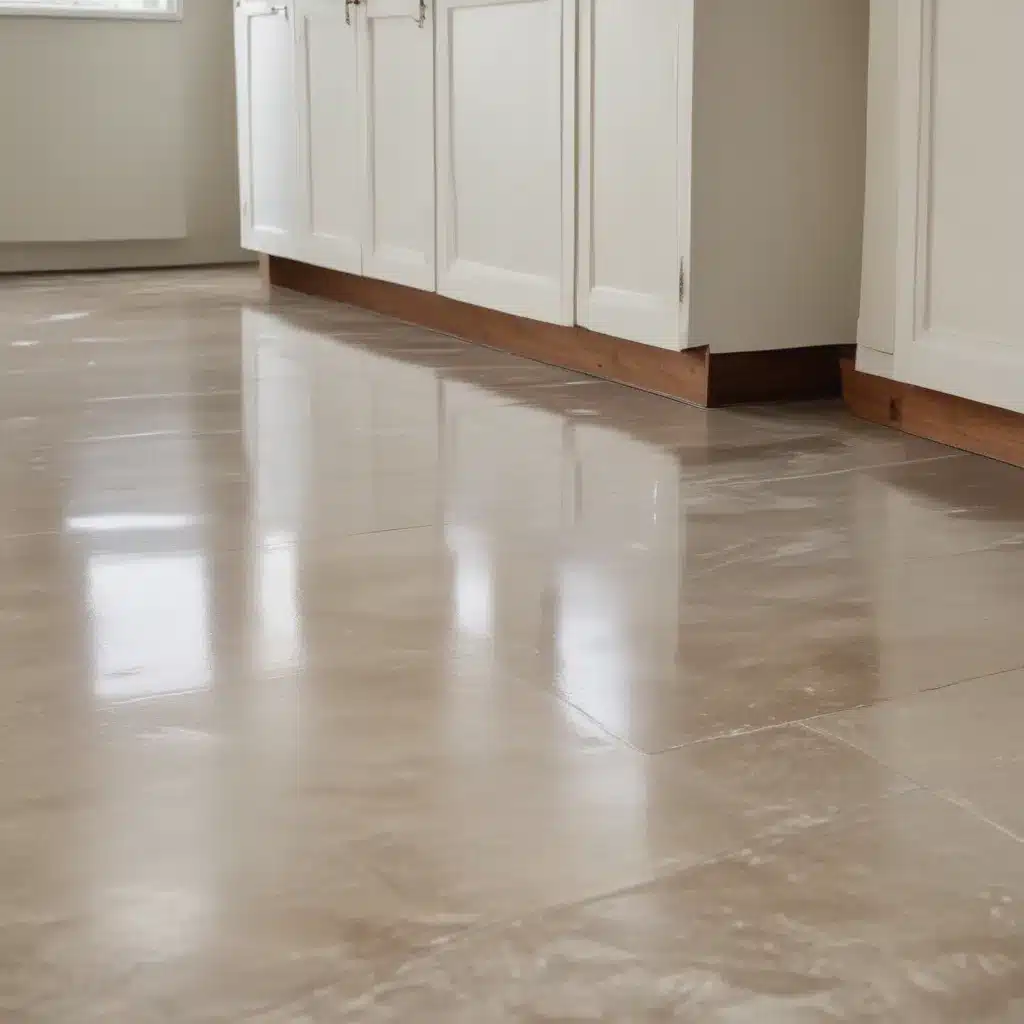The Magical Cleaning Duo
I’ve always been a bit of a cleaning fanatic. Ever since I was a kid, I’d be the one pestering my parents to let me organize their closets or scrub the grout in the bathroom. There’s just something deeply satisfying about transforming a grimy, neglected space into a sparkling, pristine oasis.
So when I started working at Adam’s Cleaning Services in Nottingham, I was thrilled to put my cleaning expertise to the test. The owner, Adam, is just as passionate about cleaning as I am, but he swears by one unconventional trick: using a simple vinegar and water solution to clean floors.
At first, I was skeptical. Vinegar? Really? Isn’t that just for pickling vegetables or making salad dressings? But Adam insisted that this humble pantry staple is a game-changer when it comes to floor cleaning. And you know what? He was right.
The Science Behind Vinegar’s Cleaning Power
Vinegar, or more specifically, acetic acid, is the secret ingredient that gives this DIY floor cleaner its cleaning superpowers. As Merry Maids explains, the acidity in vinegar allows it to cut through dirt, grime, and even hard water stains with ease. And the best part? It’s completely natural and non-toxic, making it a much more eco-friendly alternative to harsh chemical cleaners.
But don’t just take my word for it. As one Redditor in the /r/Frugal subreddit raved, “I see lots of vinegar based cleansers that call for additives such as essential oils, alcohol, castille soap, Dawn, etc. but I also see a lot of people who seem to use just a half cup of vinegar to a gallon of water for everything from mopping, counters, windows., toilets, wood floors, you name it. Is a formula that simple effective iyho?”
The answer, it seems, is a resounding yes. Vinegar’s cleaning prowess is so powerful that it can tackle a wide range of surfaces, from tile and linoleum to hardwood and even carpet, with just a simple diluted solution.
Putting Vinegar to the Test
Of course, I had to try this vinegar and water magic for myself. So one weekend, I decided to put it to the test on the floors of my own apartment. I mixed up a batch, following the Merry Maids recommendation of half a cup of vinegar per gallon of water, and got to work.
As I started mopping, I’ll admit, I was a little skeptical. The vinegar smell was strong, and I couldn’t help but wonder if it would leave behind a sticky, residual film on my floors. But to my surprise, as the solution dried, the floors looked positively spotless – no streaks or hazy residue in sight.
I was so impressed that I decided to take it a step further and try the vinegar solution on my carpets as well. Following the Merry Maids advice, I mixed up a simple baking soda and vinegar solution in a spray bottle and gave my carpets a thorough freshening. The results were amazing – the carpets were left smelling clean and refreshed, without any lingering vinegar odor.
Vinegar: The Frugal Cleaning Superhero
At this point, I’m a total convert to the vinegar and water cleaning method. Not only is it incredibly effective, but it’s also incredibly affordable. As one Redditor in the /r/KitchenConfidential subreddit noted, “the owner of this new place is really adament this is bad as it will leave a slippery layer on the floor or will straight up ruin it over time.”
But in my experience, and based on the advice from cleaning experts like Merry Maids, that simply isn’t the case. As long as you dilute the vinegar properly and make sure to wring out your mop thoroughly, you can clean your floors with this simple solution without any risk of damage or slippery residue.
In fact, one DIY cleaning expert I read even uses the vinegar and water combo to tackle her bathroom floors, tub, shower, and even her sink – with amazing results. And the best part? It’s way cheaper than buying expensive, name-brand cleaning products.
The Vinegar Cleaning Cheat Sheet
So if you’re looking to clean your floors (or really, any surface in your home) in a more eco-friendly and budget-friendly way, give the vinegar and water solution a try. Here’s a quick cheat sheet to get you started:
| Surface | Vinegar to Water Ratio |
|---|---|
| Tile | 1/2 cup vinegar to 1 gallon water |
| Linoleum | 1 cup vinegar to 1 gallon water |
| Hardwood (sealed or prefab) | 1/2 cup vinegar to 1 gallon water |
| Carpet | 1 tsp baking soda + 1 tbsp vinegar to 2 cups water |
Just remember to always do a spot test first, especially on delicate surfaces like natural stone or waxed finishes. And never, ever mix vinegar with bleach – that’s a dangerous chemical reaction you definitely want to avoid.
So there you have it – the magical, multi-purpose cleaning power of vinegar and water. Whether you’re scrubbing your kitchen floors or freshening up your carpets, this dynamic duo will have your home sparkling in no time. And the best part? You can feel good knowing you’re using a safe, natural, and budget-friendly cleaning solution. Happy cleaning!







